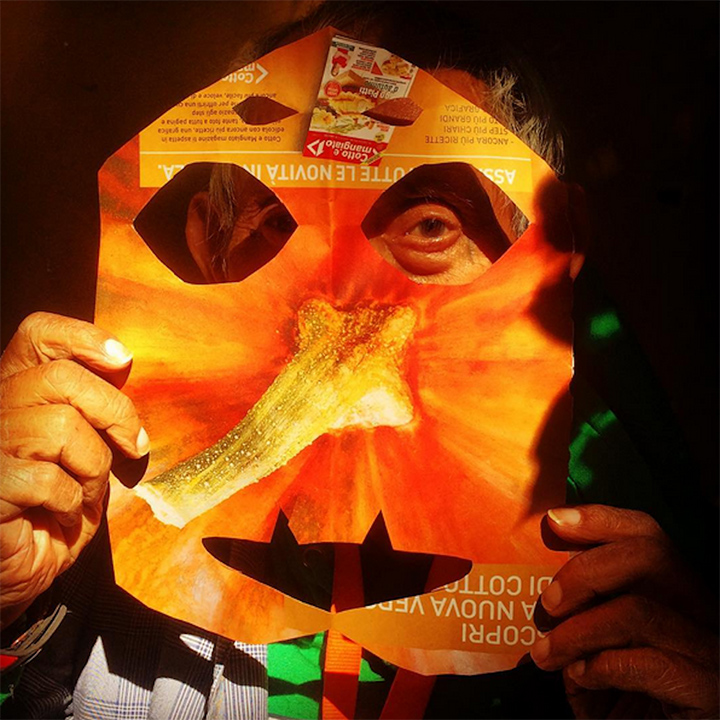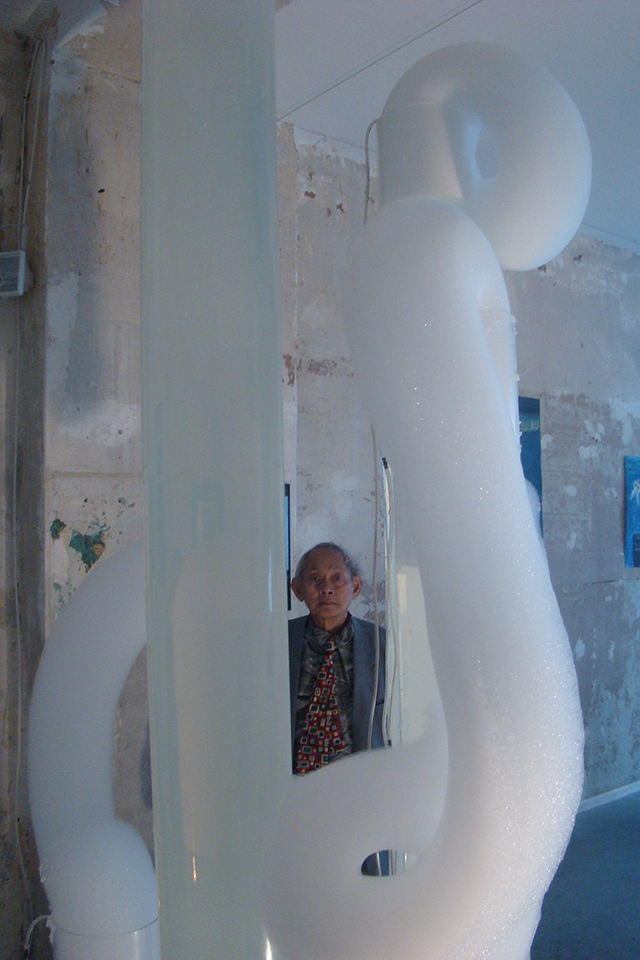“His spirit has transcended and moved so many artists, friends, strangers and the art loving public over time and space, inspired by his genius as an artist, poet, activist, wit, philosopher and raconteur. His curiosity, joy, his immense curiosity, his alchemical spirit knew no bounds.”
— Adam Nankervis

David Medalla | Image courtesy of the artist and Another Vacant Space.
David Medalla (1942-2020) was a leading art master in the Philippines. At the age of eight, he translated Shakespeare’s mater piece to Tagalog, one of the Filipino languages. At the age of 12, he was admitted by Columbia University, one of the top universities in the world. In his teenage, he studied drama, literature and philosophy. Under the encouragements of James Dean, one of the top 100 greatest actors in the United States and José Garcia Villa, a Filipino poet, Medalla pursued his childhood interest in painting and became an artist.

David Medalla | Image courtesy of the artist and Another Vacant Space.
For the art lovers in the Philippines, Medalla was regarded as “Greatest of All time”. He was a determined pioneer and an artist constantly breaking through the traditional definition and representation of art —— bubbles, graffiti and The Mondrian Fan Club were his attempts. Since his several solo shows at London and Paris in his early professional career during the 60s, Medalla had been concretely representing the invisible power through art in front of the public. Marcel Duchamp, the pioneer of Conceptual Art in the 20th century, created a medal work and showed his respect to Medalla.

David Medalla, Cloud Canyons, 1964 | Image courtesy of the artist and Another Vacant Space.
Medalla was hardly to be categorized from his unpredictable and interesting ways of art creation but he was definitely a pioneer of installation art, kinetic art and participatory art. Through his repetitive and constantly variable works and scenes, the indestructible, eternal and traditional concept in sculpture had been collapsed.

David Medalla and artist friends in London | Image courtesy of Another Vacant Space.
In 1960, Medalla moved to London, one of the cities he later often lived and worked. During the 60s and 70s, he participated in the decisive and significant exhibitions on Minimalism and Conceptual art at the United States and Europe. London, Paris and New York were the cities that Medalla always resided. He chose a life of traveling between different countries and cities to maintain his nationality as a Filipino; eventhough he lived overseas over 60 years. He thought that most of his work rooted in his identity as a Filipino. “I am a Filipino, a fact that imprinted in my consciousness. But, it doesn’t mean that I have to love everything from the Philippines due to my identity. I have a dialectical sight the same as how I am picky about my art creation.”

David Medalla, Cloud Canyons, Hepworth Wakefield Museum, 2016 | Image courtesy of the artist, Another Vacant Space. , and Hepworth Wakefield Museum
In 1964, his experience of founding a magazine and a gallery Signals Londoncontributed to “Cloud Canyons”, his representative work as well as an installation of kinetic art, which is a machine that is able to release bubbles. “Cloud Canyons” is regarded as the first automatic creative artwork by the art scholars and won the nomination of Hepworth Prize, the first prize for sculpture in the UK. In the history of the Philippines, Medalla was the first artist who has been nominated for this prize.Meanwhile, “Cloud Canyons” confirmed his self-interpretation on his identity. The inspiration of the work originates from Medalla’s childhood memory in the Philippines, including the clouds during sunsets in Manila, ginataan which is a coconut milk dessert in the Philippines made by his mother, and his witness on the cruel experience of a guerrilla who was shot and vomited blood and foam during the Japanese occupation. The other inspirations came from a Scottish brewery and a Marseille soap factory as well.

Performance at The Mondrian Fan Club | Image courtesy of the artist and Rossi & Rossi Gallery
Medalla’s continuous exploration of time and space in participatory art creation has not yet ended. In 1992, Medalla and Adam Nankervis, his husband and work partner, established The Mondrian Fan Club in New York and saluted Piet Mondrian, a Dutch artist in the De Stijl Movement and one of the initiators of non-figurative painting. The Mondrian Fan Club is the interpretation of time and space by two artists. When Medalla and Nankervis stayed at different places, they invited the locals to take part in performance, installation, painting and improvisational photography. The different corners in the world have been turned to places of inspiration, facilitating the participants to collaborate and share with each other.

David Medalla, A Stitch in Time, 2013 | Image courtesy of the artist and Another Vacant Space.
“Cloud Canyons”, a work combining sweet and bitter memories, is different to “A Stitch in Time”, a participatory installation starting from the farewell of two ex-loversexhibited at different cities over the world while gathering and integrating more people’s stories. The idea of “A Stitch in Time” began in the 60s and was influenced by the Hippie Movement and backpacker culture. Medalla gave the handkerchiefembroidered with his name to two ex-lovers who were going to different destinations, and let them to create freely on the handkerchief by the attached sewing kit during their farewell at London Heathrow Airport. Afterwards, Medalla met a stranger whose backpack was hanging various cloth materials and interesting small objects at Amsterdam Airport. He found the handkerchief given to his ex-lover hiding in the ornaments. After giving and possessing the handkerchief several times, it still returned to the owner. The magic of destiny, time and place surprised us.

David Medalla, A Stitch in Time, 2013 | Image courtesy of the artist and Another Vacant Space.
During the same period, the textile industry in the Philippines was in decline whileMedalla began to create with spools and cloth. “A Stitch in Time” is not merely a salute to love, but also showing his respect to the declining industry. “A Stitch in Time” is an installation artwork requiring the participation of the audiences. With the colorful threads, the audiences are allowed to sew what they want to express on thelong cloth piece, including names, or casually sewing other objects on it such as tickets, photos and candy wrappers. Those added contents by the audiences became a part of “A Stitch in Time” and their spaces of mediation, thought and creation found in the public is similar to graffiti artists marking their own signatures on the walls.

David Medalla, A Stitch in Time, for the 57th Venice Biennale, 2017 | Image courtesy of the artist and the Venice Biennale
Following the artist, “A Stitch in Time” has been exhibited at different places for 25 times, from Portugal to Singapore and from Venice Biennale in 2017 to Art Fair Philippines in 2019. “A Stitch in Time” has an immeasurable charm, gathering the audiences in a same place. They participated in the artwork as individuals who project the most personal experience into the work at specific time. The participating process is independent as well as shared. In the exhibition “Spectrosynthesis II”, Medalla transferred and moved this creative space that can stimulate the fun of participatory creation and gain personal experience to the Bangkok Culture and Art Centre. “A Stitch in Time” has been given by the other new level of interpretation, re-examining and discussing LGBTQ issues in Southeast Asia and in the wider region.

